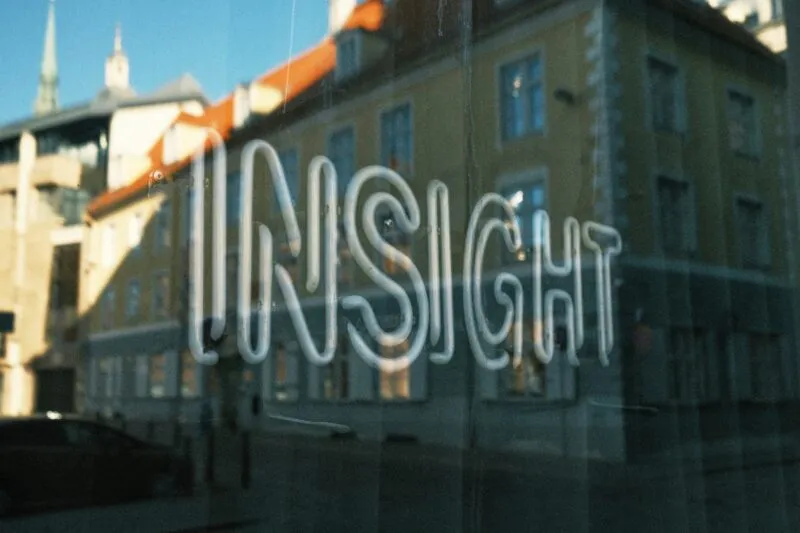Brand and business growth
This week I am pondering the fourth of four pillars to business growth, building on product innovation last week, and customer and new markets the weeks prior. A strong brand, and ideally growth, is important in business growth.
First published via my weekly LinkedIn newsletter with bonus content >
Once the basic fundamentals of business growth are performing well – a solid product, customer experience and new market empathy – BRAND is critical.
More advertising generally does not equate to brand nor business growth.
Even so, brand building, through advertising, is BIG business in its own right.
Ad spending in the Advertising market worldwide is forecasted to reach AU$1,670.00bn in 2024.
The largest market is TV & Video Advertising with a market volume of AU$517.70bn in 2024.
When considering global figures, the United States leads with ad spending projected at AU$647.70bn in 2024.
In the Advertising market, 78.55% of total ad spending will come from digital sources in 2029.
The average ad spending per capita in the In-App Advertising market is expected to be AU$69.81 in 2024.
By 2029, Advertising market of 84.92% revenue will be generated through programmatic advertising.
What differentiates a strong (often large / global) brand, from a weaker (often smaller / local) brand is awareness and availability.
“If I don’t know the brand exists and it isn’t where I shop, I will not purchase. I will purchase a better know easily available alternative.”
The challenge in 2024 and beyond is that ensuring that the advertising allows brands to grow is seemingly getting harder. Media fragmentation means that eyeballs, ears and attention are harder to reach and awareness harder to grow. Access to advertising channels is easier than ever, as easy as DIY via Facebook, Instagram, Google and other social media, which can mean that traditional media is viewed by marketers as irrelevant, unnecessary or otherwise.
Advertising becomes focused on shifting a niche rather new and wider growth of the brand, and ultimately business growth across current and new markets.
The target customer is in many ways easier to reach than ever, yet often ignored.
Brand health, measured via representative surveys, data analysis and interpretation conducted by research agencies such as Square Holes, can indicate a largely invisible brand not growing in a crowded market.
It can be scarily illuminating measuring brand health – “my ads aren’t working!”
A decade plus ago, the brand and campaign tracking we conducted for clients (pre, mid and post-campaign representative surveys and/or on-going tracking) commonly measured 70-90%+ campaign recall levels in the target market, and corresponding positive impacts on brand performance measures.
Jump to 2024, campaign recall levels of 20% or less are more common, with measures generally much lower or unmeasurable. Is the advertising actually doing anything? This is of brands valuing research accountability, so the broader measure of campaign recall and impact on brand KPIs is likely much lower.
This is for a variety of reasons, media fragmentation and complexities in reaching the target audience for example. It is also indicative of significantly smaller comparative campaign budgets, assuming that digital is more cost effective so larger investments are no longer required to reach the potential customer.
It may also be indicative of a multitude of other factors such as effectiveness of the campaign creative, from a decline in brand campaign strategies focused on a clear ‘BIG idea’ to engage the audience, or a lack of commitment into the medium and longer term on a robust media investment and strategy, and consistently clear message, tag-line, and/or call-to-action, rather than swapping too soon.
Measuring campaign wear-out (decline in effectiveness) can be a critical component of brand / campaign tracking. In saying this, itt does seem that the marketing trend is to increasingly get bored and not to allow campaigns to wear-in before swapping for a new campaign execution, message and call to action.
As Brand Academic / Influencer Mark Ritson wrote in the following piece last year.
“Marketers must learn the patience of the market. They look at their ads with such focus and passion that – inevitably – they grow tired of the work long before most of their target market has even become accustomed to it.”
The evidence indicates that to nurture brand growth once you’ve created a highly effective campaign, which is hard to crack, stick with it until absolutely necessary.
Just like logo and wider brand assets should only change when absolutely needed.
Often advertising is ineffective and misguided, and the ineffectiveness ignored.
Digital advertising can make targeting of niche segments of potential customers easier. Brand omnipresence and reaching non-customers can be overlooked in advertising targeting small audience segments. Advertising may shift to driving clicks and immediate online sales, which is nice, but rarely drives brand growth.
Businesses able to justify and commit to more sustainable brand growth tend to be larger brands (often global) able to lock in distribution networks and shelves online and in-store, backed up with omnipresent advertising online and offline.
BIG brands keeping their brands top of mind and the consumers primed to buy.
BIG brands blocking small brands from the minds and shelves of consumers.
This can be the challenge in today’s easy DIY advertising world for SMEs.
Ease of access and cost of entry is lower than ever, yet brand growth is harder.
Small to medium businesses can have a sense of marketing like the BIG guys, yet in reality the advertising spend, targeting and consumers reached is narrow.
Marketing is driving short-term clicks, visits and online sales, yet less likely brand growth, and with this it is unlikely to grow the business with the current strategy.
David Fogarty created a highly demanded product (the Oodie), a smooth customer experience and new market understanding, to quickly scale growth, and get rich quick (with growth pains). Oodie quickly growing to sales in excess of $500 Million AUD, starting by 23 year old Fogarty with $500 in the bank.
While there is potential for small businesses to become much, much BIGGER, the vast majority of small to medium businesses (and brands) are no where near as digitally, commercially and strategically savvy as Fogarty, and will struggle to achieve brand and business growth, particularly competing with larger brands.
In 2020 Square Holes continued its in-house research on how SME / local brands can grow competing against global brands, started in 2010, including a large national survey of 2,000 Australians and focus groups across age groups.
These quotes from a focus group with primary school children were insightful.
“It’s basically impossible. They’are already kings of the market. They’re so big. To start a brand that gets as big as Nike, you’d have to be working so hard all the time and you’d have to have a lot of money to get the advertisements out.”
“To compete with them it would be very very hard because they’re really really famous.”
“You have to have really vibrant and strong colours to make people notice. If you hang a poster on the edge of the street, people walking along the street will notice.”
(Fundamentals of marketing so simple and clearly articulated)
What can be heart breaking is that local small to medium businesses, can struggle to grow, even with superior products and customer experiences. Fundamentally this often comes back to a lack of strong brand growth.
This can be from small advertising budgets; inability to be strategic, consistent and committed into the medium to long term; and lack of ability to convince leadership of the value of committing financially and otherwise to brand growth. Brand growth with a smaller budget than larger global brands is hard, and the value market research is avoiding waste and being strategically focused.
BIG brands do large amounts of local and global market research to support their growth. In many ways smaller businesses and brands need research more, as they have less budget available to waste; and a greater risk of irrelevance and unwillingness to purchase against larger brands with higher levels of awareness and shelf-space. Smaller businesses have significant potential from leveraging the agility and flexibility of being smaller. Small brands can be David defeating Goliath.
While brand growth is a quite daunting concept, over complicated and theorised topic with many BIG even intimidating expert egos, blackbox methods, making even the cleverest marketers scared of doing it wrong, it is fundamentally about growing awareness. A relationship in which the customer will ever swap brands.
A brand needs to have strong awareness and be easily available to seed a relationship. Beyond this, relevance and sincerity (trust) are critical. If a brand is unable to spark a sense of relevance it will be be ignored, essentially invisible. Without trust, from developing confidence to purchase, brands will be avoided.
I can recall many years ago presenting the results of a comprehensive brand study to a client. The results illustrated segments measurably ignored, and the advertising not engaging them. A potential customer in the research noted …
“If you are not relevant, you are invisible!”
The creative director of the advertising agency chimed in …
“And, if you’re not visible to them, you are definitely invisible”.
Engaging widely regular, loyal, disloyal, infrequent and light shoppers is challenging, but critical to grow a brand (and long-term business) growth.
Research has a critical role in brand growth.
Avoiding wastage and distraction, measuring the success or otherwise of the brand (and business) strategy and guiding continuous improvement, precision and growth in current and new markets and potentially ignored segments.
So, here’s ‘cheers’ to more small to medium businesses growing their brands locally and globally to compete with the BIG brands. Think strategically, do the research and make a commitment to brand growth to drive business growth.
Have a good Friday and weekend,
Jason
(Mater image by ChatGPT)



